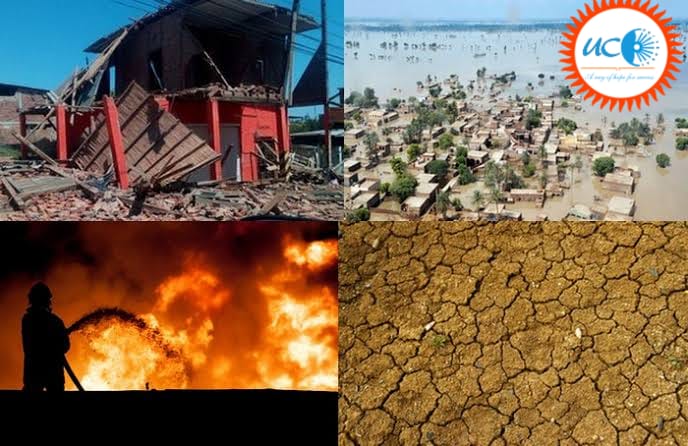What do you understand about disaster management? Discuss recent measures initiated by the Central Government in disaster management.
Answer:
Disaster leads to sudden disruption of normal life, causing severe damage to life and property. Its origin can be natural or man-made. India due to its geography and scarce resources is more vulnerable to disasters. Around 59% of the landmass is prone to earthquakes of moderate to very high intensity while about 12% of its land is prone to floods and river erosion.
The Disaster Management Act of 2005 defines Disaster Management as an integrated process of planning, organizing, coordinating and implementing measures which are necessary for:
- Prevention of threat of any disaster
- Reduction of risk of any disaster or its consequences
- Readiness to deal with any disaster
- Promptness in dealing with a disaster
- Assessing the severity of the effects of any disaster
- Rescue and relief
- Rehabilitation and Reconstruction.
Challenges associated with disaster management:
- Lack of local capacities and awareness: There is a lack of local capacities to implement disaster risk management. Weak capacity at the local levels undermines the implementation of disaster preparedness plans.
For instance, disaster risk management plans or risk-sensitive building codes exist but they are not enforced because of a lack of government capacity and public awareness.
- Lack of multi-space coverage: Absence of integration of climate change factors into disaster risk management plans. Climate change affects disaster risks in two ways: firstly, through the likely increase in weather and climate hazards and effects of sea-level rise and secondly, through the increases in vulnerability of communities to natural hazards resulting from ecosystem degradation, reductions in water and food availability.
- Lack of coordination: Due to poor coordination between stakeholders, there is inadequate access with respect to risk assessment, monitoring, early warning, disaster response and other disaster-related activities.
Recent measures initiated by Central Government in disaster management:
- National Disaster Management Plan: NDMP defines the roles and responsibilities of various stakeholders including Central Ministries, State governments, UT administrations, District authorities and local self-governments. NDMP enjoins all stakeholders to develop detailed plans in accordance with roles and responsibilities.
- Disaster Resilient Infrastructure: India presented a practical approach and roadmap with the launch of a Global Coalition for Disaster Resilient Infrastructure (CDRI) to make the infrastructure resilient in the face of disasters. It is meant to provide member countries technical support and capacity development, research and knowledge management and partnerships to facilitate and encourage investment in disaster-resilient infrastructure systems.
- Cyclone warning system: IMD is set to launch a dynamic and impact-based cyclone warning system aiming at minimizing economic losses. NDMA took up a project named National Cyclone Risk Mitigation Project (NCRMP) in which a Web-based Dynamic Composite Risk Atlas (Web-DCRA) would be developed which would help in disaster risk reduction strategies.
- Training exercises: To improve existing emergency preparedness and strengthen regional response mechanisms, the field training exercises are conducted.
For e.g., 2nd BIMSTEC Disaster Management Exercise on flood rescue was undertaken at the Ramachandi Beach, Orissa.
Way forward.
- Demarcation: A clearer demarcation of national and state-level responsibilities is needed, especially regarding risk-reduction activities.
- Capacity building: It is vital for state disaster management authorities to focus on the continued capacity-building of district disaster management authorities and CSOs that are responsible for managing disaster risk.
- Accountability mechanisms: Accountability mechanisms need to be specified. This will ensure that departments follow disaster risk-reduction considerations in their own development planning.
Disasters retard socio-economic development and lead to diversion of scarce resources from development to rehabilitation and reconstruction. Disaster management occupies an important place in this country’s policy framework as it is the poor and the under-privileged who are worst affected by disasters.






